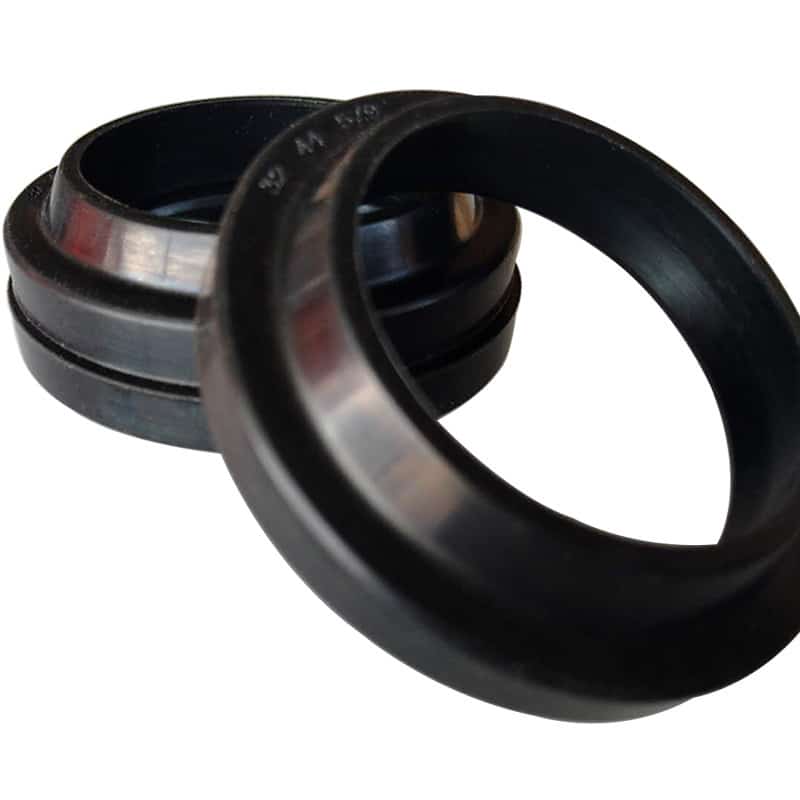Hydraulic seals might be small, but their failure can shut down entire operations. Leaks, pressure drops, and contamination are just a few consequences of worn-out seals. If you’ve ever faced a hydraulic system shutdown, you know how costly it can be. This guide will help you identify what goes wrong and how to stop it.
Hydraulic seal breakdowns often result from preventable issues. With the right knowledge and routine checks, you can dramatically reduce failures and extend your equipment life.

What causes hydraulic seals to fail prematurely?
Hydraulic seals fail due to wear, incorrect installation, and environmental stress. These issues often stem from avoidable oversights in maintenance or design.
Why do hydraulic seals harden or crack over time?
High operating temperatures are a leading cause of hardened or brittle seals. Heat exposure dries out elastomers, resulting in cracked sealing edges and pressure loss.
To avoid this, always choose materials with proper thermal ratings—like FKM for high heat—and regularly inspect your system for hotspots. We offer high-temp seal options designed for industrial use.
How does poor lubrication affect hydraulic seal performance?
Friction from dry operation leads to abrasive wear and eventually deformation. This not only damages seals but also affects adjacent metal components.
Lubrication is essential. During installation or seal replacement, apply compatible grease. Combine this with a quality dust wiper seal to keep debris away and maintain lubrication.
Can improper installation damage a hydraulic seal?
Yes. Damaged lips, twisted rings, or uneven seating are often traced back to poor handling or incorrect tools. Even a small nick during installation can cause system-wide leakage.
Follow exact installation guidelines for your seal type. For expert guidance, refer to our hydraulic seal replacement guide.
What is hydraulic seal extrusion or nibbling?
Extrusion happens when high pressure pushes the seal material into clearances between parts. It results in torn or “nibbled” seals, especially if system tolerances are loose.
To prevent this, maintain correct clearances and use backup rings when pressure exceeds recommended levels.
Do chemicals degrade hydraulic seals?
Yes. Incompatible fluids—like solvents or aggressive hydraulic oils—can cause swelling, softening, or complete breakdown of elastomer seals.
Always cross-check your fluid with the seal material’s compatibility. Our FKM vs NBR comparison can guide your material selection.
Can contamination really damage hydraulic seals?
Definitely. Dust, metal shavings, or dirty oil act like sandpaper on your seals, wearing them down faster than expected.
Use effective filtration and maintain cleanliness during installation. Consider adding protective sealing kits to improve durability.
How can I extend the lifespan of hydraulic seals?
Use compatible materials, inspect for early signs of wear, and schedule routine system checks. Add support components like backup rings and wipers when appropriate.
Key tips:
- Monitor temperature and pressure levels
- Match seal materials to fluids
- Replace seals based on operational hours
- Maintain fluid cleanliness
You can also read our full hydraulic seal service life guide.
Konklusion
Hydraulic seal failures are avoidable. With the right material, clean working conditions, and correct installation, you can keep your system leak-free and efficient.
Get help choosing the right hydraulic seal
Still unsure which material or design fits your needs? Let us help you select and source hydraulic seals tailored to your equipment.
📧 E-mail: [email protected]
📱 WhatsApp: +86 17622979498
Related topic
Hydraulic Cylinder Seal Replacement Steps
How Long Do Hydraulic Seals Last?
High Temperature Hydraulic Seals


